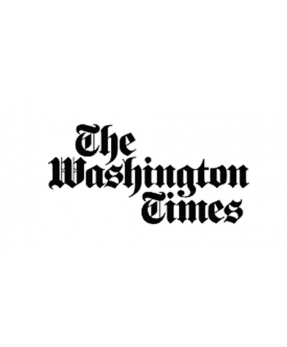(This article originally appeared in the Washington Times)
Businesses of all sizes have been dealing with significant price increases over the past year, and many of my clients have been hoping for things to calm down as the economy picks up. But the economy is based on a simple principle: supply and demand. And despite rising cases and media mania over the Delta variant, there continues to be strong demand for products, the supply of such products is not keeping up. How do we know this?
It’s a backlog.
Supply chain advisor firm Drewry reports that the price of shipping containers is now a whopping 344 percent higher this year alone. What does this mean for American buyers? It means that we’re seeing much higher shipping rates because there’s less shipping taking place. In Los Angeles, according to the Marine Exchange, a record 124 ships remained in port at the end of August. Port of Los Angeles data indicated that the ships’ average wait time had increased to 7.6 days.
“The normal number of container ships at anchor is between zero and one,” Kip Louttit, the executive director of the Marine Exchange of Southern California, told Business Insider. As of August 24, it was 71 ships. That’s a lot of backlog.
Even if the ships manage to anchor and unload, another price increase awaits buyers: the cost of moving those goods across the country. According to the latest data from the U.S. Bureau of Labor Statics, the cost of general trucking freight has increased this year by 20 percent, and the level of freight carloads transported by rail lags behind levels seen before the last Great Recession.
Supply shortages are causing freight costs to explode. And they’re also contributing to the rising costs of the core materials used to make or build just about anything in this country.
For example, the cost of plastics and resins, which are used in everything from containers and chemicals to packaging and instrument panels, have increased a whopping 46 percent since the same time last year. The prices for plastics packaging film and sheet manufacturing products, which drives the cost of the packages for our products, have increased 30 percent during the same period.
Prices for iron and steel, which are the core ingredients in most building and manufactured products, have increased 90 percent since last year. The same goes for plywood, a key material in construction, where prices have risen more than 102% since last year. The costs of industrial chemicals, which are pretty much used in everything we make and consume, have increased 45 percent over the past twelve months.
So why the backlog? The answer is simple: government policies here in the U.S. and worldwide fueling Covid hysteria.
In the U.S., employees critical to the logistics industry are not coming to work. Thanks to Biden administration policies dating back to the spring, workers have enjoyed enhanced unemployment, rent abatement, childcare, health care, and stimulus benefits. Thanks to the media panic over the Delta variant, many workers are either afraid of getting a vaccination or just frightened to engage in the real world. I have friends that are still afraid of going to a baseball game because of Covid. To me, it’s the Phillies that are actually worse for their health than the virus.
Of course, the disruption is caused by the pandemic. But American buyers — flush with trillions in cash — have the money to spend. But unfortunately, producers can’t make the products fast enough because the materials they need are in limited supply, and even when they get these goods, they’re getting them at a much higher cost. That’s a big problem for small businesses that don’t have the resources to absorb these added expenses, unlike their larger counterparts.
Many people think that these pressures will ease now that kids are going back to school and federal unemployment benefits are going away. I’m not so sure. People have built up a lot of savings. The administration is pushing to spend trillions more on entitlements. Workers can’t arrive from other countries. Unions are pushing for more incentives to return to work.
Meanwhile, public health officials, in their desire to retain their control over people’s lives, terrify the masses with crazy new rules (like a local county to me that recently required both vaccinated and unvaccinated people to wear masks while outside or a state college in New Jersey that refused to admit a student because he was not vaccinated, even though he was 100 percent virtual). None of this is saving lives. All it’s doing is fueling the hysteria and hurting the economy.
Even if these obstacles are overcome, it’s going to take a while. China, Vietnam, and other Asian countries are locking down areas to stave off new variants. But even for the products that are getting out the door, congestion will continue at our nation’s ports. Prices will remain high and even go higher. For small firms, this will be another price shock on top of increased labor and overhead caused by a shortage of workers. 2020 was a terrible year for many of these businesses. Now, as we head into the fall, it appears that 2021 will not be much better.

